I'm in the process of designing a PCB that includes 10-15 LEDs. It's battery-powered, so I'd like to use as little power as possible. As such, I've been trying to figure out how little current the LEDs need to still appear relatively bright.
As an experiment, I measured the voltage across the current-limit resistor (R12) for the power LED on my BeagleBone Black. Voltage was 0.75V, so current was only 0.16mA (using Ohm's Law).
At first this seemed like great news -- the LED appears extremely bright, so I thought I'd use the same LED/resistor combination on my board. That way, I'd be able to power 10 LEDs at a total of 1.6mA.
However, upon digging around some more, I found the following graph from the LTST-C191TBKT datasheet, which shows that luminous intensity is basically zero below ~3mA.

This seems to be a contradiction ... any ideas why the datasheet claims the LED gives off no light below 3mA, but the LED appears quite bright at 0.16mA?